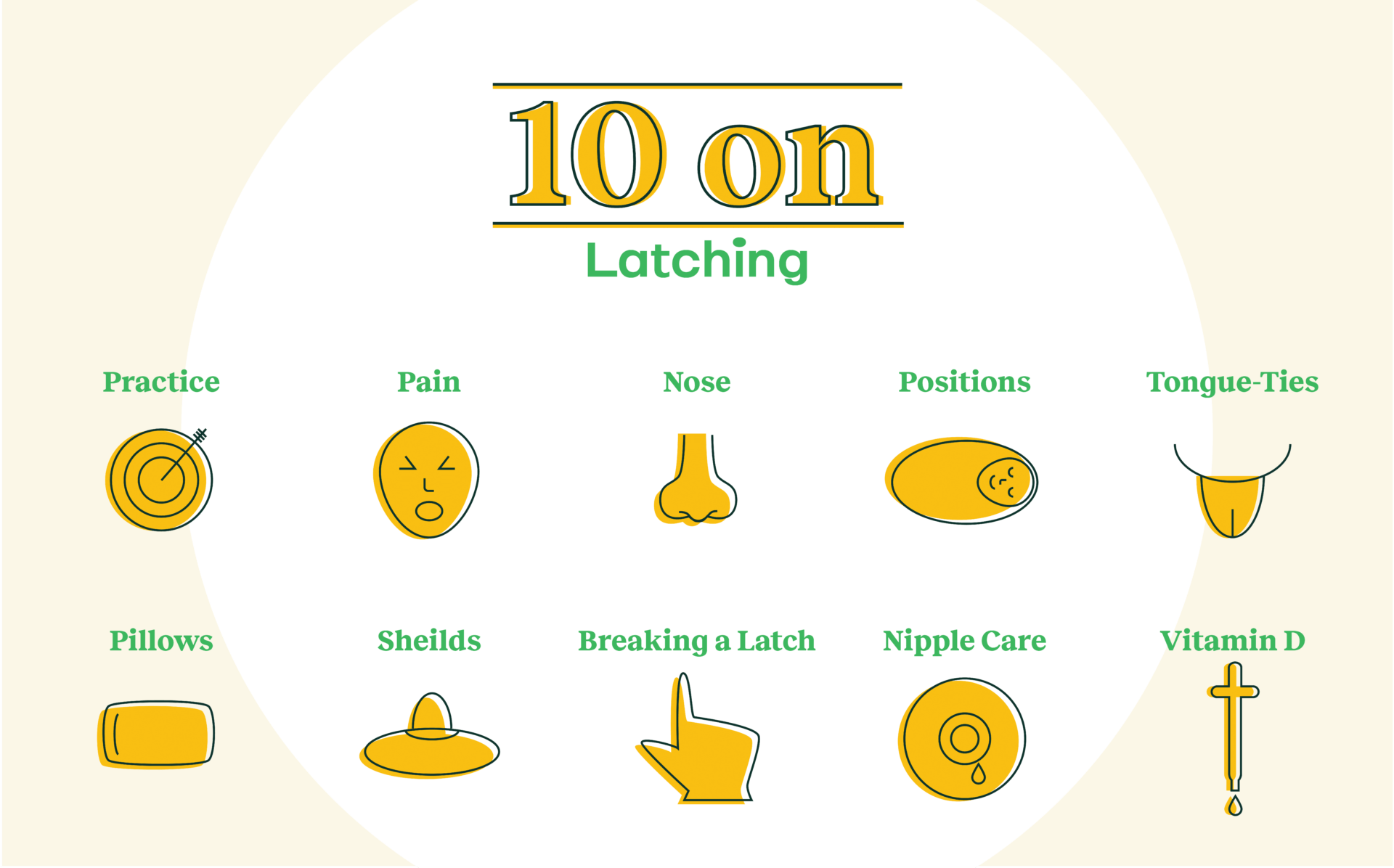We are proud to say that these posts are not sponsored. Our editorial team of Bobbie moms and writers personally select each featured product. If you buy something through our links, we may earn an affiliate commission, at no cost to you.
Latching is one of the most important aspects to master when it comes to breastfeeding a newborn. Here are 10 things to know about being successful when it comes to latching. Having a successful feeding journey is key to making it through the first months.
1- Latching takes practice
Learning how to latch involves a lot of trials and error for you and your baby so give yourselves time to figure it out.
2- Pain that comes with latching
Some babies have an aggressive suck, but a good latch shouldn’t feel painful. If you experience any discomfort, fever, flu-like symptoms, or if your baby has white residue inside their mouth that can’t be removed with a damp cloth, call your OBGYN right away.
3- Nose positioning with latching
Tease your baby’s mouth open wide by touching your nipple to their nose to encourage them to tilt their head back slightly and latch with your nipple deep in their mouth. If the tip of their nose and chin are touching your breast, you’re good to go.
4- Best positions for latching
Most moms start out learning the cross-cradle position, while others opt for the football hold or lying down. Whatever position, your baby should always have his/her entire body in one straight line facing in toward your chest.
5- Tongue-tied babies and latching
Although there are at least four different types, they can be hard to diagnose. Persistent nipple soreness despite improvements to positioning and attachment suggests a baby may be tongue-tied.
6- Pillows for latching comfort
Most latch issues are mechanical but a good nursing pillow can help anchor you to your growing baby to make feeding more comfortable.
7- Nipple shields for latching
As long as your baby is gaining weight using a nipple shield, it’s OK to keep using it. Try expressing a little milk into the tip or dipping it in breast milk first to encourage your baby to latch on.
8- Breaking a latch
Gently stick a curved finger inside a corner of your baby’s mouth to safely break their suction to avoid destroying your nipples.
9- Nipple care during breastfeeding
Allow your nipples to air dry if painful. Try rubbing a little breast milk to help heal any bruised nipples or areola. Nipple creams are also lifesavers.
10- Vitamin D while breastfeeding
Place a drop of Vitamin D on your nipple prior to latching for a super-efficient way to deliver this recommended supplement.
Need more useful info from our 10:On series? Check out tips regarding baby gas, baby allergies, baby poop and more.

